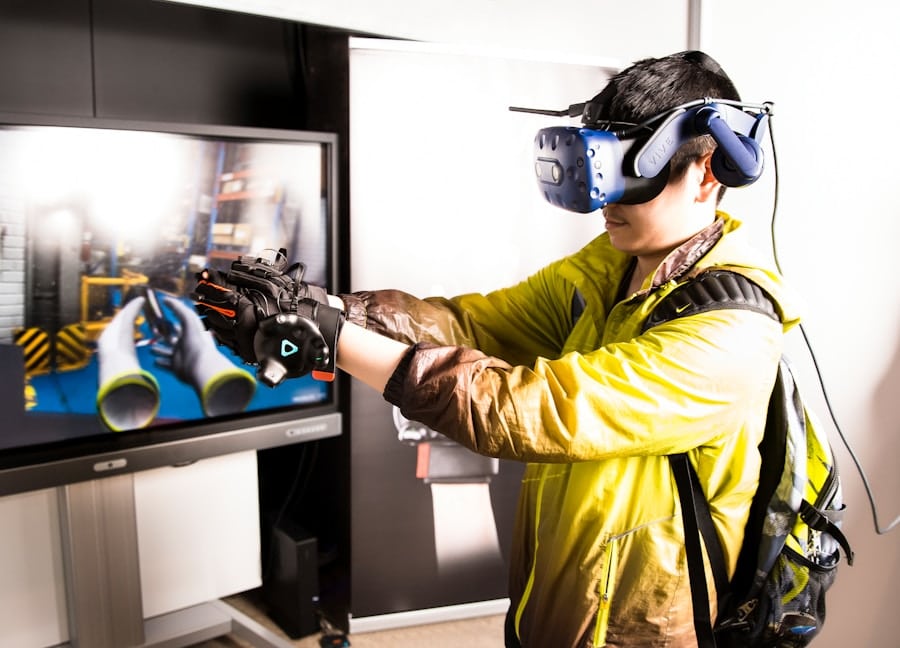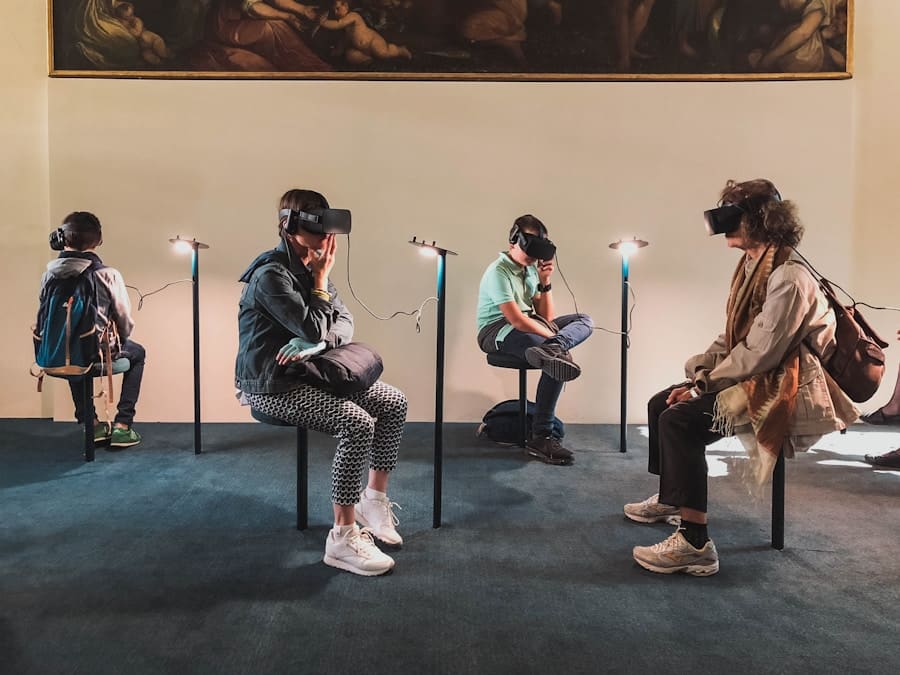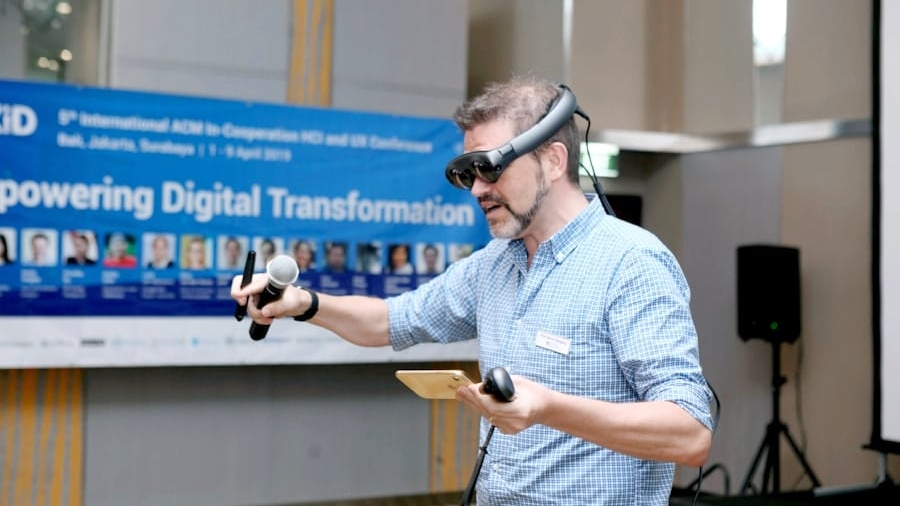Mixed reality (MR) represents a transformative intersection of the physical and digital worlds, enabling users to interact with both real and virtual elements in a seamless manner.
By integrating augmented reality (AR) and virtual reality (VR), mixed reality allows companies to create immersive environments that enhance the testing process, making it more efficient and effective.
As businesses strive to meet the ever-evolving demands of consumers, the adoption of mixed reality in product testing is becoming increasingly essential. The application of mixed reality in consumer product testing is not merely a trend; it is a paradigm shift that redefines how products are evaluated before they reach the market. Traditional testing methods often involve physical prototypes and lengthy feedback loops, which can be both time-consuming and costly.
In contrast, mixed reality facilitates a more dynamic approach, allowing testers to visualize and interact with products in a virtual space. This capability not only accelerates the testing process but also enhances the quality of insights gathered, ultimately leading to better-informed decisions regarding product design and functionality.
Key Takeaways
- Mixed reality offers a new and innovative approach to consumer product testing, allowing for more immersive and interactive experiences.
- Real-time data collection and analysis in mixed reality testing environments provide valuable insights for product development and improvement.
- Enhanced collaboration and communication among team members and stakeholders is facilitated through mixed reality technology.
- Personalized and customizable testing scenarios in mixed reality cater to individual user preferences and needs, leading to more accurate and relevant feedback.
- Mixed reality testing processes are cost-effective and time-efficient, offering a more streamlined and efficient approach to product testing.
Immersive and Interactive Testing Environments
One of the most compelling advantages of mixed reality in consumer product testing is the creation of immersive and interactive environments. These environments allow testers to engage with products in ways that were previously unimaginable. For instance, a furniture company can use mixed reality to enable customers to visualize how a piece of furniture would look in their own home before making a purchase.
By overlaying digital images of the furniture onto the real-world setting through AR, consumers can assess scale, color, and style, leading to more informed purchasing decisions. Moreover, immersive environments can simulate real-world scenarios that products are likely to encounter. For example, automotive manufacturers can create virtual test drives where users experience the vehicle’s features and performance without leaving the showroom.
This not only provides valuable insights into user preferences but also allows manufacturers to identify potential design flaws early in the development process. The ability to manipulate virtual objects within these environments fosters a deeper understanding of product functionality and user experience, ultimately enhancing the overall quality of the final product.
Real-time Data Collection and Analysis

Mixed reality technologies facilitate real-time data collection and analysis, which is crucial for effective consumer product testing. As users interact with products in a mixed reality environment, their actions can be tracked and analyzed instantaneously. This capability allows companies to gather valuable metrics on user behavior, preferences, and pain points as they occur.
For instance, a tech company testing a new wearable device can monitor how users interact with its features, identifying which functionalities are most engaging or confusing. The immediacy of data collection also enables rapid iteration based on user feedback. If testers encounter difficulties or express dissatisfaction with certain aspects of a product, developers can make adjustments on-the-fly, refining the design in real-time.
This iterative process not only accelerates product development but also ensures that the final offering aligns closely with consumer expectations. By leveraging advanced analytics tools integrated into mixed reality platforms, companies can derive actionable insights that inform design decisions and enhance overall product quality.
Enhanced Collaboration and Communication
Mixed reality fosters enhanced collaboration and communication among stakeholders involved in the product testing process. In traditional settings, teams may struggle with miscommunication or delays in sharing feedback due to geographical barriers or reliance on static documentation. However, mixed reality platforms enable real-time collaboration among designers, engineers, marketers, and consumers, regardless of their physical locations.
This collaborative approach not only streamlines communication but also enriches the testing process by incorporating diverse perspectives. When team members can visualize and interact with products together in a shared virtual environment, they are more likely to identify potential issues and generate innovative solutions.
Furthermore, involving consumers directly in the testing process through mixed reality can lead to more authentic feedback, as users can express their thoughts and experiences in real-time while engaging with the product.
Personalized and Customizable Testing Scenarios
The flexibility inherent in mixed reality technology allows for personalized and customizable testing scenarios tailored to individual user needs. Companies can create specific environments that reflect various consumer demographics or use cases, ensuring that testing is relevant and comprehensive. For instance, a skincare brand might develop different virtual scenarios that simulate various skin types and conditions, allowing testers to evaluate how products perform across diverse consumer profiles.
This level of customization not only enhances the relevance of feedback but also empowers consumers by making them feel more involved in the testing process. When users can engage with products in scenarios that resonate with their personal experiences or preferences, they are more likely to provide meaningful insights. Additionally, this tailored approach can help brands identify niche markets or unique selling propositions that may have otherwise gone unnoticed during traditional testing methods.
Cost-effective and Time-efficient Testing Processes

Implementing mixed reality in consumer product testing can lead to significant cost savings and time efficiencies for companies. Traditional product testing often requires extensive resources for prototyping, materials, and logistics associated with physical testing environments. In contrast, mixed reality allows for virtual prototyping and testing without the need for physical materials or extensive setup costs.
This reduction in resource expenditure enables companies to allocate budgets more effectively across other areas of development. Moreover, the speed at which mixed reality facilitates testing processes cannot be overstated. With the ability to conduct tests virtually and gather real-time feedback, companies can significantly shorten their product development cycles.
Instead of waiting weeks or months for physical prototypes to be built and tested, teams can iterate rapidly based on immediate insights gathered from mixed reality interactions. This agility not only accelerates time-to-market but also enhances competitiveness in an increasingly fast-paced consumer landscape.
Improved User Feedback and Engagement
Mixed reality enhances user feedback mechanisms by creating engaging experiences that encourage active participation from testers. Traditional surveys or focus groups often yield limited insights due to passive engagement; however, mixed reality immerses users in interactive scenarios that prompt them to explore products more thoroughly. For example, a gaming company might use mixed reality to allow players to test new game mechanics within an immersive environment, providing feedback based on their actual experiences rather than hypothetical scenarios.
This level of engagement leads to richer qualitative data that can inform design decisions more effectively than traditional methods. Users are more likely to articulate their thoughts when they have experienced a product firsthand in an engaging context. Additionally, mixed reality can incorporate gamification elements that motivate users to provide feedback actively—such as rewards for completing specific tasks or challenges within the testing environment—further enhancing participation rates.
Future Implications and Potential of Mixed Reality in Consumer Product Testing
The future implications of mixed reality in consumer product testing are vast and promising. As technology continues to evolve, we can expect even more sophisticated applications that leverage artificial intelligence (AI) and machine learning (ML) alongside mixed reality capabilities. For instance, AI algorithms could analyze user interactions within mixed reality environments to predict preferences or identify trends before they become apparent through traditional data analysis methods.
Furthermore, as consumer expectations shift towards personalized experiences, mixed reality will play an increasingly vital role in shaping how products are developed and tested. Companies that embrace this technology will likely gain a competitive edge by delivering products that resonate deeply with their target audiences. The potential for cross-industry applications is also significant; sectors such as healthcare could utilize mixed reality for patient education or training simulations, while retail could enhance customer experiences through virtual try-ons or interactive displays.
In conclusion, mixed reality is poised to revolutionize consumer product testing by providing immersive environments for interaction, real-time data collection capabilities, enhanced collaboration among stakeholders, personalized scenarios tailored to individual needs, cost-effective processes that save time and resources, improved user engagement through active participation, and promising future implications driven by technological advancements. As businesses continue to explore these possibilities, the integration of mixed reality into their testing frameworks will undoubtedly lead to more innovative products that meet the evolving demands of consumers.
If you are interested in exploring the latest technology trends, you may also want to check out this review of the Samsung Galaxy S23. This article provides an in-depth analysis of the features and performance of the latest smartphone from Samsung, offering valuable insights for tech enthusiasts. Just like how mixed reality is revolutionizing consumer product testing experiences, the Samsung Galaxy S23 is pushing the boundaries of mobile technology with its innovative design and cutting-edge features.
FAQs
What is mixed reality?
Mixed reality (MR) is a technology that combines elements of both virtual reality (VR) and augmented reality (AR) to create a more immersive and interactive experience. It allows users to interact with digital objects in the real world and vice versa.
How does mixed reality improve consumer product testing experiences?
Mixed reality allows consumers to interact with virtual representations of products in a more realistic and immersive way. This can provide a more accurate representation of how a product will look and function in real life, leading to more informed purchasing decisions.
What are the benefits of using mixed reality for consumer product testing?
Some benefits of using mixed reality for consumer product testing include improved product visualization, enhanced user engagement, cost savings on physical prototypes, and the ability to gather real-time feedback from consumers.
Are there any limitations to using mixed reality for consumer product testing?
Some limitations of using mixed reality for consumer product testing include the need for specialized hardware, potential technical issues, and the learning curve for both consumers and product testers in using the technology.

